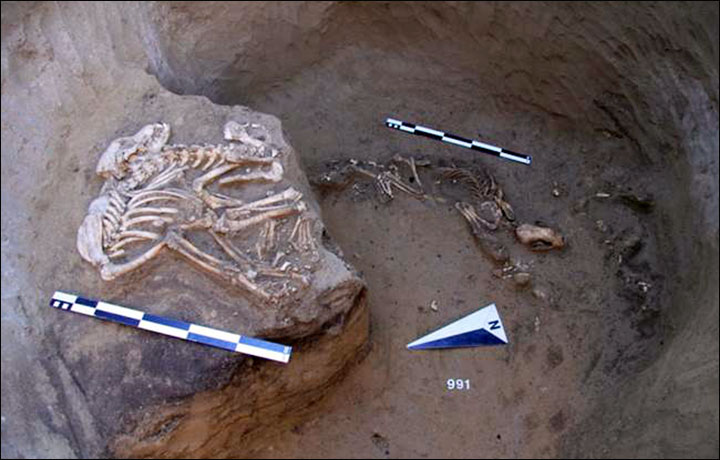Un fumoir néolithique mis au jour en Sibérie
Page 1 sur 1
 Un fumoir néolithique mis au jour en Sibérie
Un fumoir néolithique mis au jour en Sibérie
Neolithic Smokehouse Found in Siberia
Friday, November 06, 2015

(Institute of Archaeology and Ethnography SB RAS)
NOVOSIBIRSK, RUSSIA—A 5,000-year-old site consisting of pits in the ground that were used for processing and smoking fish has been unearthed in Siberia. “This year we came across an unusual facility, a Neolithic smokehouse,” Vyacheslav Molodin of the Russian Academy of Sciences told The Siberian Times. “This method is known and is still used by some Siberian and Extreme North ethnic groups. The fish starts smelling, but it didn’t bother our ancestors,” he said. The bones of other animals were also found in the pits, including a wolverine, ermine remains, a dog, and a fox. Wolverines are native to the taiga, and not the local steppe, raising the question of how a wolverine ended up in a smokehouse pit. “For some time the pits were used for ritual purposes but it’s a huge mystery which we have yet to understand,” Molodin added. To read about medieval archaeology in Siberia, go to "Fortress of Solitude."
http://archaeology.org/news/3863-151106-siberia-neolithic-pit
Friday, November 06, 2015

(Institute of Archaeology and Ethnography SB RAS)
NOVOSIBIRSK, RUSSIA—A 5,000-year-old site consisting of pits in the ground that were used for processing and smoking fish has been unearthed in Siberia. “This year we came across an unusual facility, a Neolithic smokehouse,” Vyacheslav Molodin of the Russian Academy of Sciences told The Siberian Times. “This method is known and is still used by some Siberian and Extreme North ethnic groups. The fish starts smelling, but it didn’t bother our ancestors,” he said. The bones of other animals were also found in the pits, including a wolverine, ermine remains, a dog, and a fox. Wolverines are native to the taiga, and not the local steppe, raising the question of how a wolverine ended up in a smokehouse pit. “For some time the pits were used for ritual purposes but it’s a huge mystery which we have yet to understand,” Molodin added. To read about medieval archaeology in Siberia, go to "Fortress of Solitude."
http://archaeology.org/news/3863-151106-siberia-neolithic-pit
 Sujets similaires
Sujets similaires» Un chiot vieux de 12000 ans retrouvé quasi intact dans la glace de Sibérie
» Les Indiens d'Amérique venaient de Sibérie
» Du sang de mammouth découvert en Sibérie. Bientôt le clonage?
» Les Indiens d'Amérique venaient de Sibérie
» Du sang de mammouth découvert en Sibérie. Bientôt le clonage?
Page 1 sur 1
Permission de ce forum:
Vous ne pouvez pas répondre aux sujets dans ce forum



» Animals in Mesolithic Burials in Europe
» Les objets de parure associés au dépôt funéraire mésolithique de Große Ofnet : implications pour la compréhension de l’organisation sociale des dernières sociétés de chasseurs-cueilleurs du Jura Souabe
» Les grands mammifères de la couche 5 de Mutzig I (Bas-Rhin). La subsistance au Paléolithique moyen en Alsace
» Aspects of faunal exploitation in the Middle Palaeolithic : evidence from Wallertheim (Rheinhessen, Germany)
» Middle Paleolithic subsistence in the central Rhine Valley
» Broadening and diversification of hunted resources, from the Late Palaeolithic to the Late Mesolithic, in the North and East of France and the bordering areas
» Les boules de loess d’Achenheim et les "Lihtte Mirr". Essai de paléo-ethnographie comparée
» Les galets tronqués à base plane des lœss de la terrasse de Hangenbieten
» Néolithique "initial"', néolithique ancien et néolithisation dans l'espace centre-européen : une vision rénovée